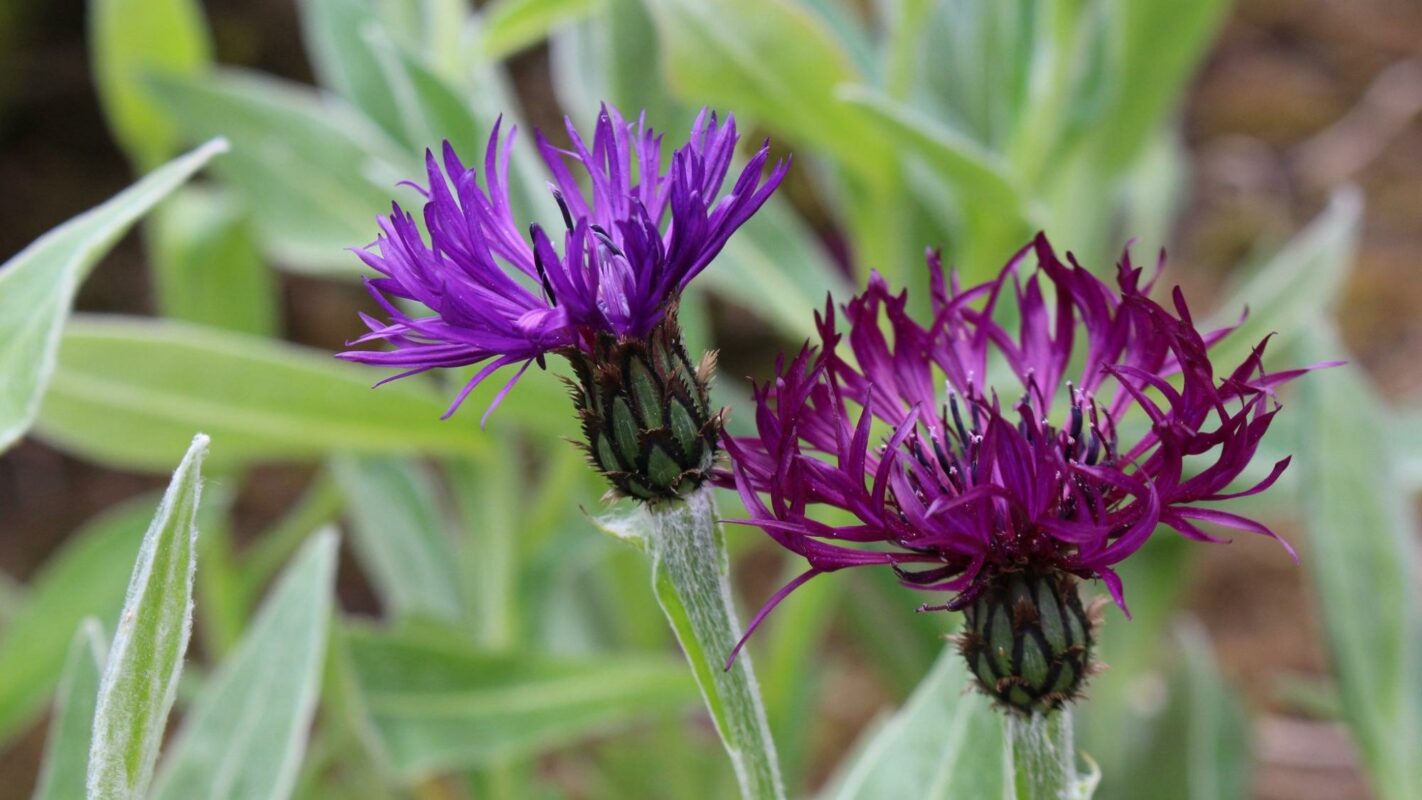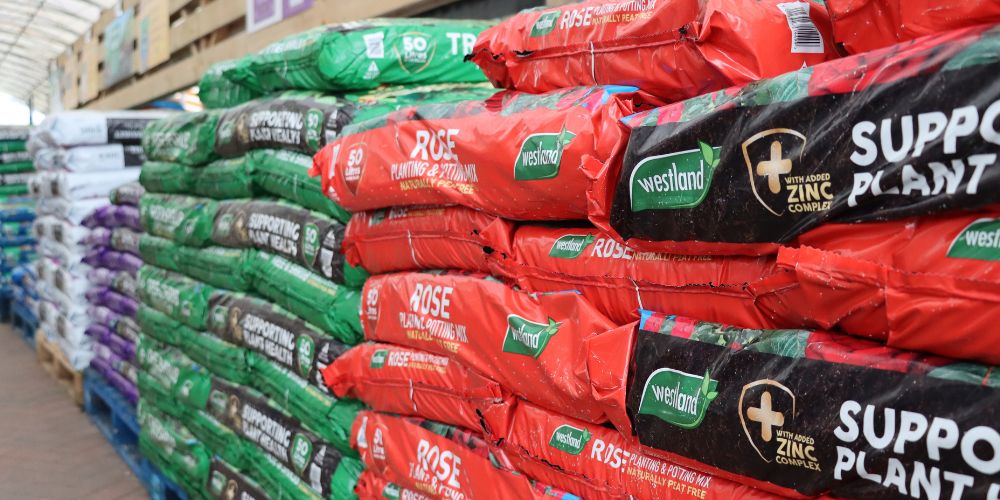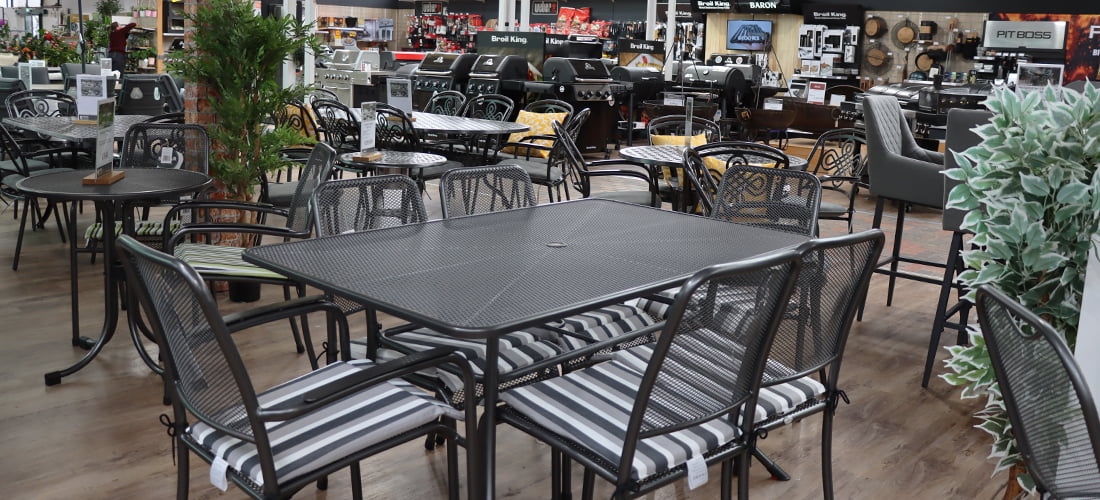Living in a chalky area means that your soil dries out very quickly, can be relatively shallow and lack nutrients that some plants require. Luckily, most plants will grow easily in chalk or lime soils (pH 8) and those that particularly thrive are shown in this leaflet. It does not mean, however that those not listed will not grow successfully. Only lime haters, those plants which require an acid soil, will fail on chalky soils.
Many plants survive quite happily in near-drought conditions. They need little water and so are real labour-savers. Ideal is you do not have time to regularly water or are often away on holiday or business. They all appreciate hot, dry and sunny sites.
Many of the plants mentioned below can be viewed on our Plant Finder.
FLOWERS FOR DRY AND THIN CHALKY SOILS
- Alyssum saxatile (Gold Dust)
- Aquilegia (Columbine)
- Arabis
- Armeria (Thrift)
- Aubretia
- Bergenia (Elephants Ears)
- Campanula esp. C. allioni & C. excisa
- Centaurea (Cornflower)
- Cerastium (Snow in Summer)
- Centranthus (Valerian)
- Cheiranthus (Wallflower)
- Cosmos
- Crocus
- Dianthus (Carnation, Pink, Sweet William)
- Echium
- Eryngium (Sea Holly)
- Eschscholtzia (Californian Poppy)
- Gazania
- Gypsophila (Baby’s Breath)
- Heuchera (Coral Flower)
- Iberis (Candytuft)
- Lampranthus
- Lantana
- Lathyrus (Sweet Pea )
- Linum (Flax)
- Matthiola (Stock)
- Mesembryanthemum
- Nasturtium
- Paeonia (Peony)
- Papaver (Poppy)
- Portulaca
- Pulsatilla (Pasque Flower)
- Pyrethrum (Marguerite)
- Saxifraga (except S. lilacina)
- Scabiosa (Scabious)
- Sedum / Sempervivum (Houseleek)
- Thymus (Thyme)
For winter colour, ornamental cabbage and kale thrive in thin lime soils.
SHRUBS
-
Many shrubs will tolerate drought to an extent. Some, especially Mediterranean grey-leaved shrubs dislike water logging, and need good drainage during winter months.
- Artemisia abrotanum: silver grey aromatic foliage.
- Aucuba (Laurel): many varieties with plain green shiny, spotty or variegated leaves which tolerate shady sites. Bright scarlet berries on ‘Rozanne’ and female ‘Japonica’.
- Atriplex: semi-evergreen, thrives near the sea.
- Berberis: prickly, tough shrubs with orangey spring flowers and small dark berries in the autumn. Various heights.
- Buddleia (Butterfly Bush): fast growing shrubs with long flower panicles in white, pink, purple or blue.
- Buxus (Box): ideal for shaped hedges.
- Caryopteris: grey foliage, blue flowers in late summer.
- Ceanothus repens (California Lilac): arching mound version of this small-leaved climber with mid-blue flowers in May. Sunny position.
- Cistus (Sun Rose): grey or green leaved low grower with bright rose-like flowers.
- Colutea (Bladder Senna): yellow pea-shaped flowers from June-September. 3″ inflated pods in autumn.
- Convolvulus: fairly tender with white or blue flowers.
- Cortaderia (Pampas Grass): plumes in late summer.
- Cotoneaster: wide range of varieties which all have white flowers in summer and then abundant red or orange berries.
- Cytisus nigricans (Broom): rounded shrub with bright yellow pea-like flowers. Sun lover.
- Eleagnus: various varieties of these drought resistant shrubs with differing, variegated or plain green leaves. Good for hedging. E. ebingeii good by coast.
- Escallonia: evergreen or semi-evergreen with small shiny leaves and red, white or pink flowers. Various forms and heights.
- Euonymous radicans: mostly low growing variegated shrubs which tolerate shade. ‘Ovatus’ (Evergreen Spindle Tree) is excellent for hedging.
- Genista (Broom): low growing varieties include the popular ‘Lydia’ and ‘Vancouver Gold’.
- Hebe: wide range of hardy small-leaved and less hardy larger-leaved shrubs. White/mauve firs.
- Helianthum (Rock Rose): low-growing dark green or silver-leaved shrubs with bright, long-flowering rose-like blooms.
- Hispanica (Spanish Gorse): is taller & will tolerate drought and thrive in a sunny site.
- Hydrangea: thrive in chalky soils but like a moist root run. H. villosa will tolerate thin chalky soils.
- Hypericum (St John’s Wort): ground coverers with semi-evergreen leaves, thrive in poor soils on a sunny bank.
- Indigofera: Acacia-like foliage with rosy-purple pea-shaped flowers. Avoid heavy soils.
- Juniperus (Juniper): low-growing forms make a dense mat of blue-green foliage.
- Lavandula (Lavender): aromatic grey leaves, low growing. Also ideal for hedging purple, pink or white flowers.
- Myrtus (Myrtle): appreciate a sheltered position. They have small green or variegated shiny leaves.
- Olearia (Daisy Bush): generally with white flowers, very tolerant of sea winds & salt sprays.
- Perovskia (Russian Sage): grey-green coarsely-toothed leaves with tubular, two-lipped violet-blue flowers.
- Phlomis fruticosa (Jerusalem Sage): grey-green woolly leaves with whorls of yellow flowers.
- Potentilla: long-flowering (May-October) hardy shrubs with yellow, cream, white and orangy-red flowers like miniature single roses.
- Prunus: wide range of deciduous ‘flowering cherry’ shrubs and evergreen ‘cherry laurels’ which tolerate fairly thin chalky soils.
- Rhus (Sumach): renowned for autumn colouring, R. typhina tends to sucker.
- Rosa (Rose): most roses tolerate heavy soils and, once established, will survive quite dry conditions.
- Ribes (Flowering Currant): Spring flowering shrubs with fairly erect habit.
- Rosemarianus (Rosemary): evergreen shrubby herbs with aromatic grey linear leaves and pale mauve flowers, upright or spreading.
- Rubus (Ornamental Blackberry): Brambles either trailing or upright some with decorative white-washed stems.
- Ruta: semi-evergreens with blue foliage and bright yellow flowers. ‘Jackman’s Blue’ is a compact form. Useful herb.
- Santolina (Cotton Lavender): silvery, woolly, finely-dissected leaves and bright lemon flowers.
- Senecio: lax-growing, tough grey-leaved shrub useful to make a low hedge or on its own.
- Spartium (Spanish Broom): almost leafless rush like stems carry yellow pea-like flowers.
- Spirea: long-flowering and easily grown. Small individual flowers arranged in closely-packed heads.
- Symphoricarpus (Snow Berry): varieties with white or pink berries, all suckering freely.
- Syringa (Lilac): ideal for chalky soils, need some mulching. Many varieties and colours.
- Tamarix: ideal for coastal hedging being resistant to sea winds. Fine feathery flowers and foliage.
- Ulex (Gorse): blaze of golden flowers April/May. Superb prickly barrier for hot, dry banks.
- Vinca (Periwinkle): range of greater and lesser varieties. Ideal for banks and shady positions.
- Yucca: architectural leaves with white flowers July/August.
TREES
-
When a tree is planted in well-drained soil, a hole should be dug twice as deep and wide and the container originally purchased, and tree and shrub compost added to the hole. The below thrive reasonably well in a dry environment once established:
- Amalanchier (Snowy Mespilus): small tree or multi-stemmed shrub. 6m+
- Carpinus (Hornbeam): like a small Beech.
- Chamaecyparis: attractive conifers – add some compost when planting. Many do not tolerate coastal winds.
- Crataegus (Hawthorn or May): tough drought-resistant trees. Flower late spring.
- Eucalyptus: grown principally for their grey juvenile foliage. Native to Australia, tolerate drought.
- Fagus (Beech): ideal for extreme alkaline soils, shallow-rooted.
- Gleditsia: ornamental pinnate foliage trees, tolerant of drought conditions and town pollution.
- Juniperus: upright and prostrate forms, many of which are ideal for rockeries.
- Laburnum (Gold Chains): small round head trees. Poisonous pods.
- Malus (Ornamental Crab): a wide range. Attractive flowers followed by fruits.
- Picea: variations of the popular Christmas tree in many different shaped forms.
- Pinus (Pine): vary from dwarf to very tall. Ideal for windy coastal fringes.
- Prunus (Flowering almonds, cherries peaches & plums): a vast range available, survive if well-mulched.
- Robinia: hardy flowering trees with pea-like flowers. Prefers sheltered position.
- Sorbus aucuparia (Mountain Ash): lovely summer flowers and attractive autumn berries.
- Taxus (Yew): available in green and gold, ideal for hedging.
- Vinca (Periwinkle): Spreading or trailing shiny-leaved long flowering ground coverer.
- Weigela: Profuse red, pink or white flowers.
CLIMBERS
-
- Ceanothus (California Lilac): small leaved blue flowerers which need sun.
- Clematis: Head in the sun, roots in the shade.
- Hedera (Ivy): large range of self-clingers with plain gold or silver variegated leaves. Grow anywhere including shade.
- Hydrangea petiolaris: the climbing version has frothy white flowers and thrives in shade.
- Jasminum (Jasmine): the winter J. nudiflorum and J. officinale are the best known of these easy to grow climbers.
- Leptospermum: slightly tender, flowering climbers that do well on south-facing walls and in sheltered coastal gardens.
- Passiflora (Passion Flower): exotic, slightly tender climbers for south facing positions.
- Wisteria: once established will tolerate a fairly dry spell but soil must not be too poor and thin.
CONIFERS FOR TOLERATING HEAVY CLAY SOILS
-
- Achillea (Yarrow): herbaceous and alpine flat flowering plants with ferny leaves.
- Cleome (Spider Flower): spiky stemmed plants with scented spider-like flowers.
- Cosmos: showy dahlia-like flowers – love a hot, dry position.
- Gypsophila: chalk lovers – lovely white starry flowers.
- Helianthus (Sunflower): tall familiar flowers
- Linum (Flax): salver shaped flowers, easily grown.
- Nepeta (Catmint): loved by cats.
- Nerine: bulbs producing strap shaped pink flowers.
- Verbascum (Mullein): stately yellow flowers for the back of the border. Thrive in full sun and well drained soil.
For more information, please visit one of our Garden Centres and speak to a member of our friendly and knowledgeable plant team.








